This Cain and Abel lesson plan will help you teach young people about the importance of generosity over jealousy. They will read and remember the story of Cain and Abel, but more importantly, they will read and reflect on how it relates to their lives.
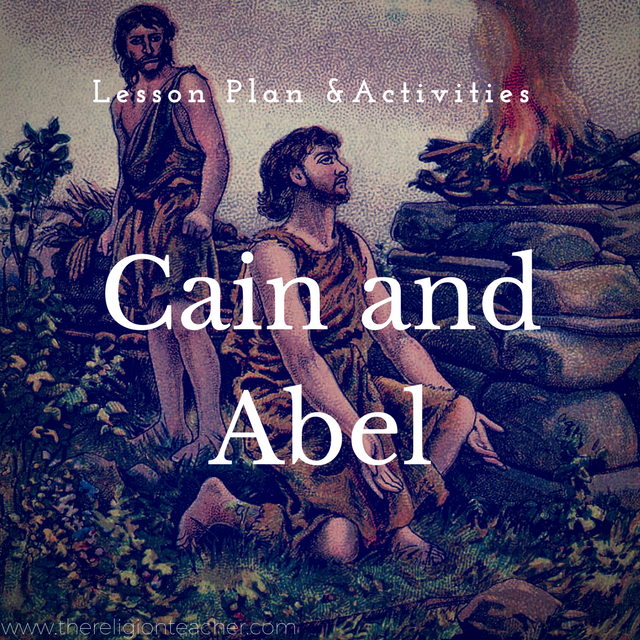
Cain and Abel Lesson Objective
Students will be able to (SWBAT) reflect on the ways they have been jealous like Cain or generous like Abel.
Cain and Abel Lesson Activities
1. Hook
Invite the students to bring in a gift for another teacher (or catechist). Have the students each talk about what they brought in and why. Don’t do any teaching yet; just observe. During the sharing time, did any of the students indicate that their gifts were more meaningful than others? Did any of the students try to be especially generous? Help make connections between this act of bringing in a gift for a teacher and the story of Cain and Abel you are about to read next in the lesson.
2. Presentation: Read the Story of Cain and Abel
Read Genesis 4:2-16 and have the students use one of the reading guide graphic organizers found here as they read.
You can also share this video summary and reflection on the story with your students:
3. Practice: Cain and Abel Discussion Questions
After you finish reading the story with the students, ask a few questions to make sure they understand what they read. Here are a few Cain and Abel discussion questions:
- What did Cain and Abel offer to God? (Cain: fruit of the ground, Abel: animal)
- What does Genesis say about Abel’s offering? (It was the fatty portion, the firstling of his flock)
- What warning and advice does God give to Cain about being angry? (“If you act rightly, you will be accepted; but if not, sin lies in wait at the door: its urge is for you, yet you can rule over it.”)
- What does Cain do despite God’s warning? (He kills his brother Abel.)
- How does God punish Cain? (He cannot be a farmer; he has to be a wanderer.)
- Does God completely abandon Cain? (No, he bans anyone from taking revenge on him.)
Now ask a few questions that get at the deeper meaning of the story:
- Why was Abel’s gift met with approval from God? (Abel gave generously from the first and best that he had.)
- Why did God not approve of Cain’s offering? (Cain was worried about giving away too much.)
Alternative Activity: Another fun tactic is to invite the students to make up and ask the questions about what happened in the story. This will push them to reread the story in order to create good questions. Give them a few minutes to brainstorm questions and let them lead the discussion.
4. Practice: Cain and Abel Meditation Worksheet
Now that the students have a thorough understanding of what happened in the story, invite them into a brief process of Lectio Divina. Help them make connections between what they read and the way they are living their lives today. For this particular story, you want them to reflect on the times that they are generous like Abel or jealous like Cain. Have them make a list of ways they have been like either person in the story on a blank sheet of paper or download this worksheet from The Religion Teacher’s Genesis Worksheets:
5. Assessment: Charades of Selfishness
Check for the students’ understanding of the story and the depth to which they have reflected on how it relates to their lives with a game of charades. Here are the typical rules of charades.
Have the students write down one act of selfishness and jealousy (like Cain) to be placed in a hat or bowl. Work closely with the students to make sure they are writing down things we do that truly are similar to Cain’s selfish offering and jealous reaction in the story.
Then have the students each pick a paper to act out in front of the class. Breaking the students up into groups of 4 or 6 will work best in larger classes. You could even break them up into teams if you have a enough students.
Remember, though, that the assessment is meant to show how well students are able to reflect on the ways they have been or can be jealous like Cain or generous like Abel. That means you need to make sure the jealous acts they write down really do connect with the story.
When the students finish a few rounds of Cain Charades, have them repeat the process by writing down generous acts like Abel and acting them out in front of groups.
Bonus: Two Additional Ways to Teach about Cain and Abel
In this live lesson, I shared three ways to teach about Cain and Abel including the approach described in this lesson:
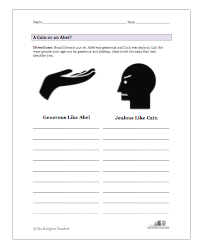
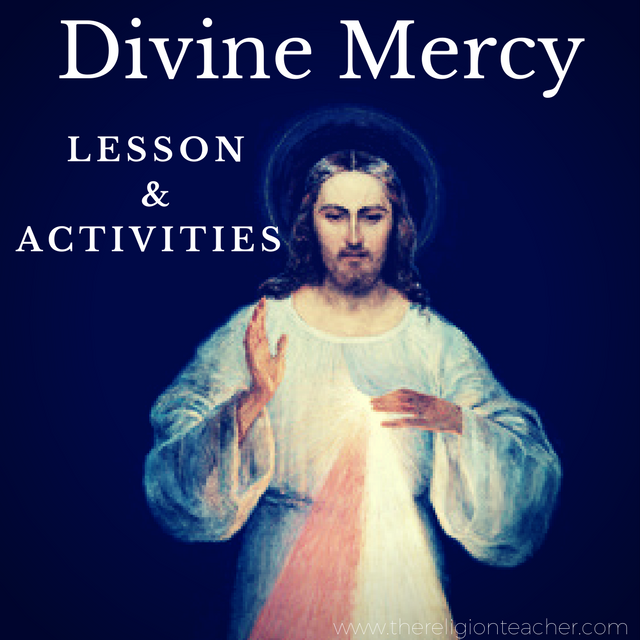
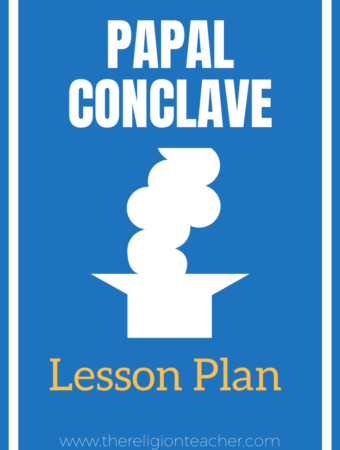
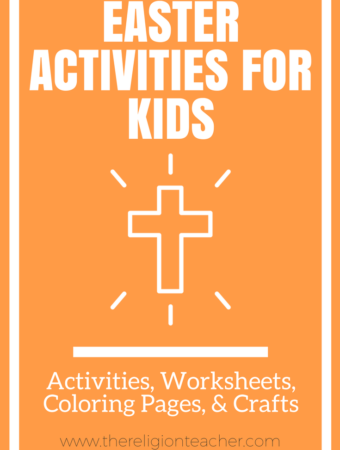
I like your idea of answering Cain’s question
With ‘Yes, we are our brother’s keeper. We can
make it a better world.’
When I teach this story I find that students cannot understand what was wrong with Cain’s offering.
I ask them to imagine that they came to school without
their lunch or money. They are in the cafeteria
Between two friends. One offers the crust from
around his bread to eat while the other offers half of his sandwich. I then ask, “Which of the two offerings is similar to Cain’s offering and which one is similar to Abel’s? This helps clarify the issue.